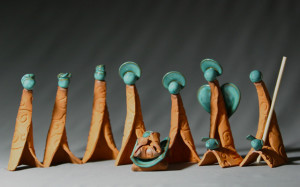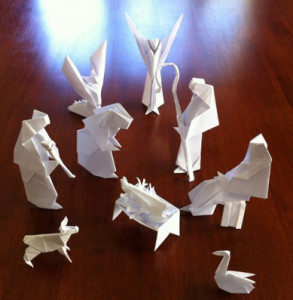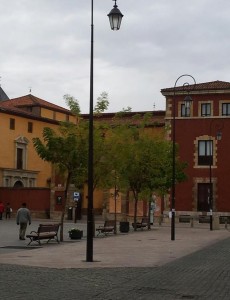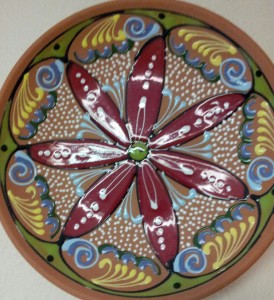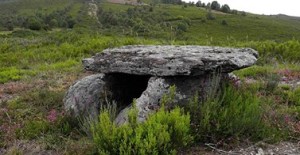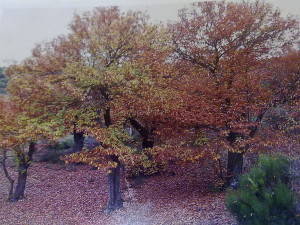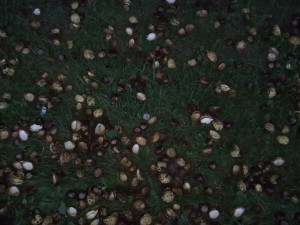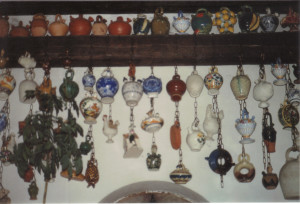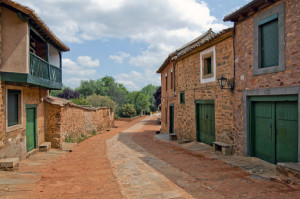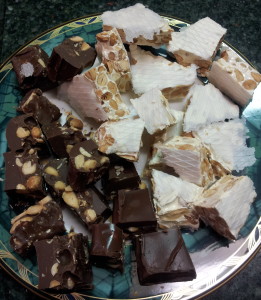
The white turron on the right-hand side is the typical one that has been around for centuries. The chocolate turron on the left is a very yummy modern turron.
One of my favorite Spanish holiday treats is turrón, and if you’ve never had it, you are missing out! It’s a typical sweet eaten around this time of the year, along with marzipan, and it’s similar to peanut brittle, except much less sugary. In the picture you can see that the proportion of nuts to nougat is much higher than it is in brittle.
Almonds, the main ingredient in turrón, are, not surprisingly, a huge crop in Spain. As a matter of fact, according to Sabor Mediterráneo, a digital magazine about Mediterranean cuisine, Spain is the second largest producer of almonds in the world (the U.S. is first.) One of my favorite things to do in Spain in early spring is to walk along the rows upon rows of almond trees clad in their delicate and fragrant white blossoms. Many villages have lined the roads leading in and out with almond trees, and you haven’t lived until you’ve gathered fresh almonds in the fall and spent an afternoon shelling and devouring them. It’s a taste you just don’t get in store-bought nuts.
Honey, sugar and whipped egg white are the only other ingredients traditional turrón.
Turrón is such an emblematic part of the holiday season in Spain, that to miss out on it because of economic hard times is a really sad thing. According to Europa Press, Jose Manuel Sirvent, the CEO of Almendra y Miel, a big turrón making plant in Alicante, said that it’s important to show solidarity with less privileged groups, especially in these hard economic times. Over the years this company has been committed to social responsibility and this year they will be donating turrón to 1000 families who are in need. “Turron, just like toys, is something we all look forward to, it’s tradition and it brings families together.” Bravo! (This company makes the brands “1880” and “El Lobo.”)
But, just like toys, you may be wondering? I dare say, turrón is even more emblematic of the season than toys are and that’s partly because it’s been around for a long time. According to my favorite resource, Wikipedia, almonds and honey were already used to manufacture sweets when the southern portion of Spain, Alicante, was still under Arabic control between the years 711 and 1492. As early as the 11th century, an Arabic doctor wrote a treatise about medicines in which he mentions “turun.” Fast-forward to 1582, and there’s a document in the Alicante municipality stating that every year, since time immemorial, the city of Alicante pays salaries at Christmas time partly in money, and partly in a gift of turrón.
Nowadays there are several different varieties besides the traditional hard and soft ones: there’s one with chocolate as its nougat instead of honey, there’s one with egg yolk in the nougat, some with jellied fruits and even with one with coconut. I’ve been able to purchase all the different flavors in the U.S.
If you want to try to make some turrón for yourself at home, here’s a YouTube video. It’s in Spanish, but there are only a few ingredients, and I think you’ll get the gist by watching how it’s done.
This is my last post for this year. Wishing you the best holiday season, full of love and joy, and a wonderful start to the New Year! ¡Feliz Navidad y Próspero Año Nuevo!
If you enjoyed this blog post, you might also like my series of novels, Bueno, Sinco and Brujas, which takes place in Santander, Spain.



